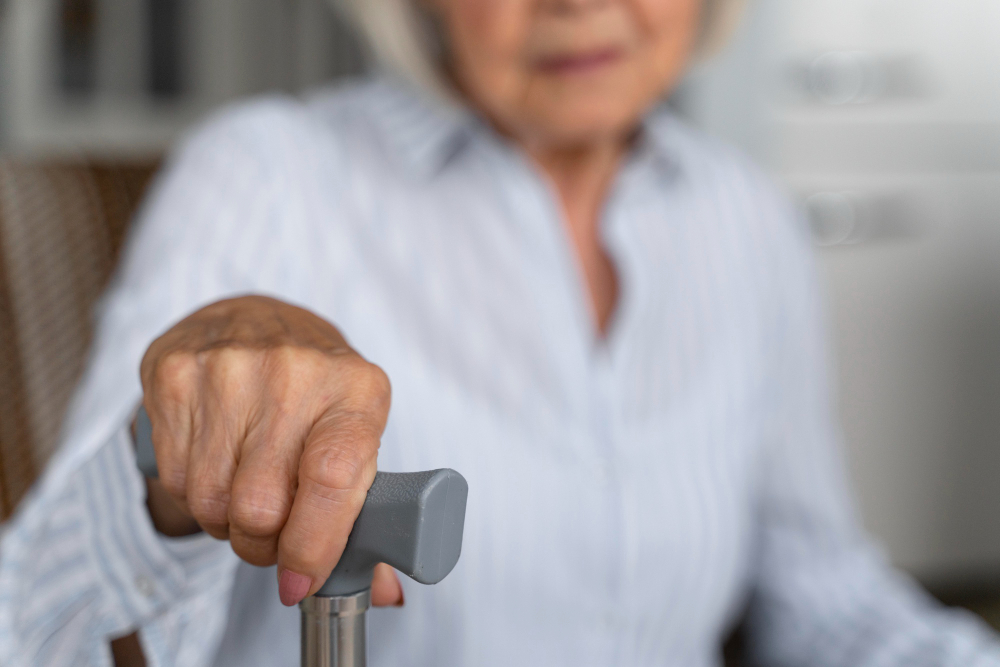

Sarcopenia is characterized by significant loss of strength, muscle mass, and physical performance (photo: Freepik)
This is the conclusion of a study that evaluated data from 4,500 people who were followed for 14 years. The results are helpful in clinical practice and for screening patients at risk, eliminating the need for complicated tests.
This is the conclusion of a study that evaluated data from 4,500 people who were followed for 14 years. The results are helpful in clinical practice and for screening patients at risk, eliminating the need for complicated tests.

Sarcopenia is characterized by significant loss of strength, muscle mass, and physical performance (photo: Freepik)
By Maria Fernanda Ziegler | Agência FAPESP – A study conducted by researchers at the Federal University of São Carlos (UFSCar) in Brazil and University College London (UCL) in the United Kingdom shows that sarcopenia should be considered a more concerning indicator of risk of death than frailty syndrome. This finding was published in the Journal of Epidemiology and Community Health and assists in clinical practice and screening patients at risk without the need for complicated tests.
Frailty and sarcopenia are two very common syndromes of aging that share muscle weakness and slow walking speed, and they help predict the risk of death. Sarcopenia involves significant loss of strength, muscle mass, and physical performance. Frailty, on the other hand, is more comprehensive and can be characterized by the presence of three or more of the following factors: unintentional weight loss, fatigue, muscle weakness, decreased walking speed, and low physical activity level.
It is worth noting that experts classify it as “probable sarcopenia” when an older adult exhibits only muscle weakness. When this symptom is associated with low muscle mass, it confirms a sarcopenia diagnosis. When this condition is accompanied by slow walking, it is identified as severe sarcopenia.
“Not all older adults will develop sarcopenia or frailty. But, in general, those who are frail have sarcopenia. That’s why this study is important in guiding healthcare professionals in risk assessment, as a way to help them make better treatment decisions,” says Tiago da Silva Alexandre, a professor in the Department of Gerontology at UFSCar and author of the study, which was funded by FAPESP.
The researchers analyzed data from 4,597 participants in the English Longitudinal Study of Ageing (ELSA), a longitudinal health study in England. The participants were followed for 14 years. The researchers found that when muscle weakness was defined, as a handgrip strength of less than 36 kilograms (kg) for men and 23 kg for women, this resulted in the following increased risks of death: 17% higher for older adults with probable sarcopenia, 31% for those with sarcopenia, and 62% for those with severe sarcopenia, compared to participants without the disease. Conversely, the risk of death was 49% higher for frail older adults than for those without frailty. The condition of “pre-frailty” was not associated with an increased risk of death in older adults.
“Assessing frailty isn’t complicated, but it ends up being more time-consuming, as it requires questionnaires that analyze exhaustion and low levels of physical activity, as well as assessment of unintentional weight loss, handgrip strength, and walking speed. The diagnosis of sarcopenia is simpler, made by assessing muscle mass, handgrip strength [an indicator of overall strength], and walking speed in meters per second, with muscle mass being estimated in the doctor’s office using data on the older adult’s age, sex, weight, height, and race,” explains the researcher.
Cutoff points
There is still controversy in the scientific community over the best handgrip strength value with which to define muscle weakness. In their article, Alexandre and the other authors argue for increasing the values for more accurate screening (read more at: agencia.fapesp.br/39837).
The cutoff points range from 36 kg for men and 23 kg for women to 26 kg for men and 16 kg for women. “In this study, we analyzed sarcopenia using the five most frequent cutoff points in the literature. And with that, we identified that the highest ones were the most effective in predicting the risk of death when both conditions – sarcopenia and frailty – are put in the same mathematical model,” he says.
The study “Frailty or sarcopenia: which is a better indicator of mortality risk in older adults?” can be read at jech.bmj.com/content/early/2024/10/11/jech-2024-222678.
Republish
The Agency FAPESP licenses news via Creative Commons (CC-BY-NC-ND) so that they can be republished free of charge and in a simple way by other digital or printed vehicles. Agência FAPESP must be credited as the source of the content being republished and the name of the reporter (if any) must be attributed. Using the HMTL button below allows compliance with these rules, detailed in Digital Republishing Policy FAPESP.





